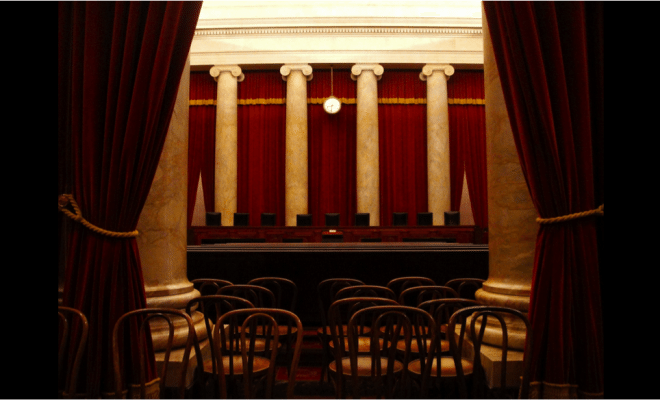
News
3 Reasons Why the Supreme Court Needs To Publicize Its Edits
As the highest court in the United States, the Supreme Court is viewed as having the greatest authority over the interpretation of the law. It is often assumed that when the court issues a decision, the ruling marks the final word on the legal question proposed. However, something that many citizens might not know is that the Supreme Court decisions can be altered after their publication without public notice.
Richard J. Lazarus, professor of law at Harvard University, has written an article set for publication in the December 2014 Harvard Law Review that exposes the Supreme Court’s practice of editing and changing opinions after they are initially published. He states that the Court’s decisions do include a statement in small text that reads, “this opinion is subject to formal revision before publication.” However, in many cases, these changes are not simple edits, and the court does not make a public notification of these additions or deletions from opinions.
This practice of editing court opinions is by no means new: the Supreme Court has been altering the wording of its decisions since the early days of its existence. Indeed, some of the most famous rulings have been edited after they were issued. The 1857 Dred Scott case, for example, received an additional 18 pages written by Chief Justice Roger B. Taney, who wrote the majority opinion for the case. More recently, the 2003 case Lawrence v. Texas, which significantly struck down a Texas law against sodomy, was altered: a sentence written in Sandra Day O’Connor‘s concurring opinion was struck in which she had stated that Justice Antonin Scalia “apparently agrees that […] Texas’ sodomy law would not pass scrutiny under the Equal Protection Clause.” In these cases and so many others, justices have changed the wording, added or deleted sentences, and made other edits to their opinions without the notification of these alterations. Something here doesn’t seem right.
3 reasons why these discrete changes are problematic:
1. It can cause discrepancies in understanding the law.
Law professors rely on many court decisions in their instruction. If changes to court decisions are not announced, these professors continue to teach and discuss older versions of court decisions that may have undergone important edits. How can professors properly instruct the next generation of lawyers and lawmakers if they do not have access to the most recently updated copies of case law? Additionally, lawyers also need to have the correct version of court cases at their disposal in order to use Supreme Court decisions as precedents for their current cases.
2. Failing to notify what changes were made in the final draft of a decision does not allow for uniformity of the law.
The fact that the court makes unpublicized changes to the law leads to a number of different versions of court decisions, which can become confusing. Supreme Court decisions are extremely important: as the highest judicial body in the nation, the Supreme Court can, through its rulings, overturn decisions by lower courts and declare laws at the local, state, and national level unconstitutional. After the Supreme Court reaches a decision, government at all levels in the United States must comply with the Court’s ruling and make the necessary changes to the law. However, in order to do so, there needs to be a uniform understanding of what the Supreme Court has ruled.
The fact that the court makes discreet changes to the law without public notification allows for different renditions of their decisions to circulate. Some who pay close attention to the court may realize that a ruling’s wording has changed, but many websites continue to have older versions of court rulings. The copy of O’Connor’s concurring opinion on the Cornell Law website, for example, still contains the sentence that, as previously explained, has been admitted. The fact that even law websites exhibit older versions of cases is troubling.
3. The public deserves to be made aware of any changes to the interpretation of law that could affect them.
The Court not publicly announcing when edits are made to its decisions provides yet another example of the lack of government transparency. Even though the court notes that its decisions are subject to change, it is hard for average citizen to realize when edits are made unless the Court announces them. And while many of these changes constitute simple word changes, it could also be the case that the court could make a substantial addition to a case that could affect the livelihoods of Americans. Even something as simple as the addition or deletion of a few words could change the way a phrase in a decision is interpreted, and this could be crucial in Americans’ understanding of the law.
Unfortunately, there is no law or mechanism that can force the supreme judicial body to publicize these changes. However, the court should still choose to do so, and some justices of recent times such as Harry Blackman realized that the Court “operates on a strange and ‘reverse’ basis, where the professional editing is done after initial public release.” To preserve the credibility of their institution, it is incumbent upon justices to publicize their changes
[NY Times] [Harvard Law] [Cornell Law]
—
Sarah Helden (@sheldren430)
Featured image courtesy of [Kenudigit via Flickr]








Comments